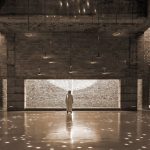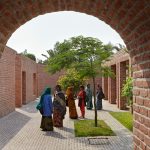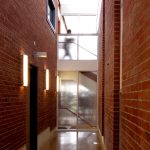2018 Memorial
Kashef Chowdhury

Kashef Chowdhury is an architect and Principal of URBANA, established in Dhaka in 1995.
The work of Kashef Chowdhury/URBANA spans various typologies and places importance on architecture growing out of the human and natural context where it is situated. Works in the studio are given extended time for research, so as to reach a certain level of innovation and original expression. Rooting in history and philosophy, the work of Kashef Chowdhury is a mirror to the geo-cultural and socio-political context particular to that region and pays special attention to the often fragile natural environment where the work is destined to exist.
Built and ongoing projects range from raised settlements in flood prone riverine islands in northern Bangladesh to conversion of the famous ship Rainbow Warrior into a sea going hospital boat to an art gallery, two museums, a national monument, a learning center, a cyclone shelter, clinics, a hospital, mosques, university campuses, an art center and sculpture park, a sports complex to several office buildings, single and multi family residences to various interventions in the city of Dhaka for the Mayor’s office.
Kashef Chowdhury continues to believe that architecture can only be experienced in person and in-situ and therefore avoids elaborate websites and digital presentations of his work.
Chowdhury is a photographer, takes an active interest in art, teaches and lectures globally. His work has been the subject of several solo exhibitions and publications and has received awards, including the Architectural Review EA Award 2012, London, and Aga Khan Award for Architecture 2016, Geneva.
Chowdhury maintains his respect of time, stating his desire to separate his studio from the influences of ‘the passing world’ to avoid ‘rushing through the design process’, and to always remember that ‘time is of the essence’.
– Catherine Slessor, editor of Architectural Review, and Rob Gregory, writer, critic.
Chowdhury works with the materials and craftsmanship available, but avoids any obvious ‘localist’ agenda. His work is rooted in the realities and even collective memories of his country but aspires to a level of generality that crosses frontiers, recalling the observation of the Mexican painter Rufino Tamayo: ‘Art is universal, the accent in local’.
– William J R Curtis, historian, critic and writer.
Sheer talent and magnanimous intelligence prevail so that with his modest ludic gestures Chowdhury rightly stakes his claim as the elect architect of his generation.
– Kenneth Frampton, Ware Professor, Graduate School of Architecture, Planning and Preservation at Columbia University






